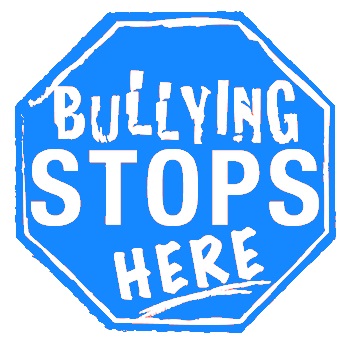Let’s extend World-Bullying Prevention Month year round
By Sam Seery on October 20, 2021
Bullying, globally, is a major problem among almost every school, as reported by PACER, a national bullying prevention center founded in 2006, and the initiator for National World-Bullying Prevention Month. According to the National Center For Educational Statistics (NCES), one out of every five students in schools across the globe report being bullied, and according to the Center For Disease Control, students who experience bullying are at increased risk for anxiety, depression, sleep difficulties, lower academic success rates and achievements, and even dropping out of school than other students who do not experience bullying on a daily basis. Students are bullied in numerous ways—physically, verbally and electronically—which only allows for more opportunities for bullying and harassment.
PACER, as well as many other non-bullying organizations, are working extra hard this month to prevent bullying, which is defined as repetitive harassment, harm, coerce, intimidation or abuse to another person.
As described, there are three main types of bullying. The first type is physical bullying. Physical bullying occurs when someone is physically abusing or harming someone else. Shoving, pushing, kicking, punching and other negatively intended and harmful abuse is all physical bullying.
The second type of bullying is verbal bullying. Verbal bullying occurs when someone is being verbally harassed or intimidated by someone else. Teasing, harsh language, making fun of people and other negatively intended and harmful words and language is all verbal bullying.
The third type of bullying is electronic bullying, or “cyberbullying.” Electronic bullying is when someone is virtually harassing, using harmful language towards another person or intimidating others online. Negative commenting, taking photos of people without their permission and using them for negative purposes, spreading rumors of invalid information online and other forms of harassment and intimidation online is electronic bullying.
There are numerous ways that bullying can be prevented through school powers, but there is still a lot that students themselves can do. One of the most simple ways, according to PACER, is to simply not be a bystander to bullying. If it is seen that physical, verbal or electronic bullying is occuring, don’t join in. Don’t continue the bullying, no matter what the type. Instead, stand up for others. Seek a school counselor or trusted adult. Provide aid to the student being bullied if able. According to many non-bullying and bullying prevention organizations and websites, all it takes is one person to positively impact a student’s life and possibly end or subdue further bullying.
And, just because the month will soon be coming to a close, it does not mean that prevention for bullying has to stop. Prevention can occur in whatever month of the year. Make sure to positively celebrate World-Bullying Prevention Month this October by using the ways above to prevent bullying and harassment.
Search
News

Colleges returning to using standardized testing for admissions
Annie Seery | April 17, 2024Standardized testing has long been debated over. Now with many colleges after the pandemic requiring SAT scores again to apply, many students struggle to rise above their scores. These...
-
 Hanna Lane | April 17, 2024
Hanna Lane | April 17, 2024
-
 Hanna Lane | April 9, 2024
Hanna Lane | April 9, 2024
-
 Hanna Lane | April 2, 2024
Hanna Lane | April 2, 2024
-
 Annie Seery | March 28, 2024
Annie Seery | March 28, 2024
-
About
The Tiger Hi-Line Online is an award-winning creation produced by the journalism students at Cedar Falls High School. We produce written, photographic and video stories of the latest news around campus as well as teen-centered topics from around the world. The content is created entirely by students, primarily from the newspaper, broadcast and yearbook courses at Cedar Falls High School. Please email any story ideas to hilinestaff@gmail.com.Tags
2018-2019 2019-2020 alayna yates AOTW art artist of the week athlete of the week basketball books Cedar Falls High School CFHS choir Christmas college COVID donald trump Eden Davis entertainment Erin McRae feature Football games halloween home homecoming Iowa Jaden Merrick jared hylton movies music news opinion our view politics prom robotics Sabine Martin Sal Engle Skylar Promer Sophia Schillinger sports state Swimming video games volleyball




You must be logged in to post a comment Login